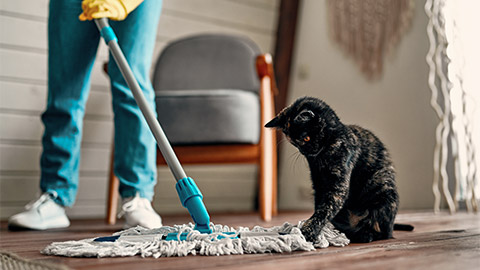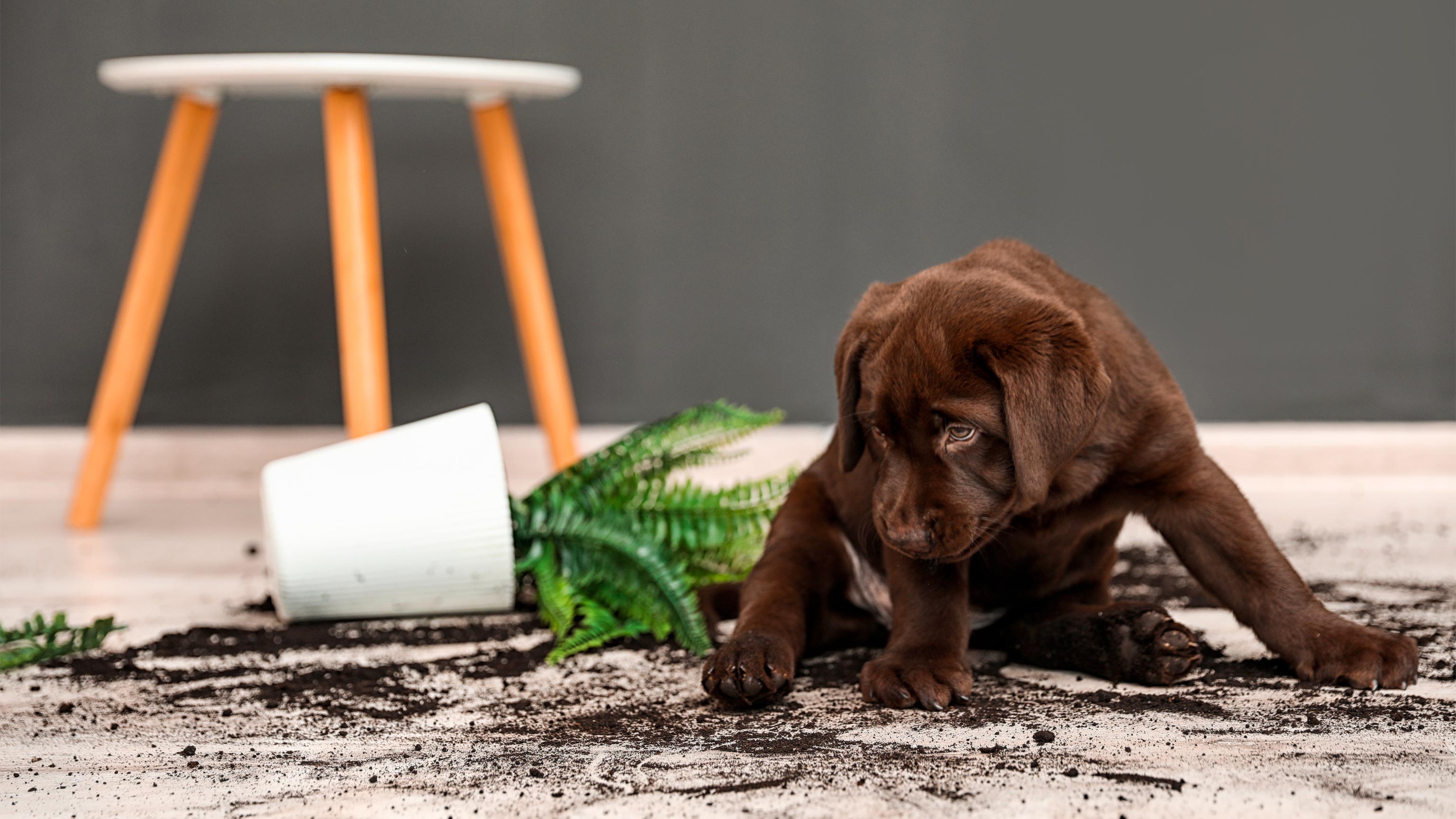Maintaining a clean, hygienic workplace is important to prevent the spread of infectious diseases. In the animal care industry, this helps to protect the animals you work with and reduces the risk to yourself and others from potentially zoonotic diseases. A dirty workplace also looks unprofessional to customers and may prevent them from returning in the future.
In addition to this, regular cleaning helps you to identify damage to animal housing and equipment and get it fixed early before it causes injury or is beyond repair and regular cleaning makes cleaning easier. Leaving something for a long time to clean makes cleaning it more difficult when the task eventually gets done.
There are some differences between cleaning and sanitising.
- Cleaning – the physical removal of visible contamination ie. Rubbish, faeces, grime, dirt.
- This process often includes the use of water and detergent.
- Sanitising – the killing of bacteria using heat and/or chemicals.
What areas are required to be cleaned and when?
- Surfaces should be wiped over to remove dirt and possible contamination - after each use.
- Holding cages and runs that are currently in use should be thoroughly cleaned daily and spot cleaned as required to remove additional faeces, vomit, and spilled food.
- Bedding, bowls, toys, and other accessories should be cleaned after each use.
- Equipment used during the treatment or handling of animals must be cleaned and sanitised - after each use.
- Hands should be washed after each contact with potential sources of contamination.
- Floors should be mopped regularly at least daily and spot cleaned as required.
- Bins should be emptied daily and additionally as required if they are full.
- Drains should be cleaned weekly.
- Cleaning equipment, such as mops, buckets, and washing machines should be cleaned regularly
- Scrub tops, gowns, and/or work clothes should be washed regularly and changed or removed when entering/exiting 'controlled' areas (such as surgical suites and isolation wards).

Most workplaces will have documented cleaning schedules that form part of the policies and procedures manual / system. A cleaning schedule and the policy/procedure that it is linked to will normally outline the following information.
- Areas to be cleaned.
- Equipment required.
- Cleaning techniques.
- Personal protective equipment (PPE) required.
- Health and safety information related to particular cleaning processes, products, or equipment.
- Frequency of cleaning required.
- Checklists for recording when cleaning has been completed.
Basic Cleaning
Waste removal and wiping/scrubbing with water and mild detergent will remove dirt and grime from a surface or environment.
Examples of detergents include:
- dishwashing liquid
- floor cleaner
- spray and wipe sprays (unless specifically labelled as a disinfectant)
- laundry detergent.
Scrubbing prevents a biofilm, which, if present can create a barrier that protects micro-organisms from physical removal or disinfection. Different areas may require different cleaning strategies depending on the nature of the surface and its use.
Sanitising
Chemical agents that can be applied to inanimate objects which cause the destruction or inhibition of most micro-organisms are known as disinfectants.
Examples of disinfectants are:
- Chlorine-based (bleach)
- Solutions with Quaternary Ammonium Compounds (Dettol and wet wipes)
- Alcohol-based solutions at least 70% concentration (hand sanitisers)
- Povidone-iodine topical solutions (Betadine)
As disinfectants are often highly corrosive or carcinogenic, routine use in low-risk areas may not be recommended. This is primarily due to the risk of un-targeted use of disinfectants possibly contributing to the development of microbial resistance.
A commonly used safe disinfect is F10 (quaternary ammonium and biguanide compound), which is effective against a range of common viruses, bacteria, spores and fungi including Parvovirus. You can read more about F10 here: F10 SC Veterinary Disinfection Information.
Low-risk areas may include:
- holding cages/runs for animals with known vaccination/health history
- reception areas
- outdoor areas.
Ensure you are familiar with the safety recommendations of any potentially hazardous product before using it. If the surface or equipment that you are cleaning is related to an animal of unknown health status, a broad spectrum disinfectant should be used.
If the animal has a diagnosed illness, a disinfectant known to be effective against the pathogen identified should be used. Remember to ensure that disinfectants do not come into direct contact with animals or their food/water, ensure surfaces and utensils are thoroughly dried before returning the animal to the area.
Sanitising can also be achieved through the application of heat. The use of autoclaves (industrial sterilising machines) to sanitise/sterilise caging, water bottles, and feeding bowls, as well as utensils, might be standard practice in animal care facilities where infection and biosecurity is a high risk, like veterinary hospitals or scientific laboratories.
In the animal care industry, you will come across many forms of waste, some of which may be hazardous to your health. For example:
Animal Waste
Biological in nature and has the potential to cause harm by acting as a pathological waste while undergoing decomposition. Examples include the following (assuming that the items are not infectious or contaminated):
- animal carcasses, limbs, and tissue
- used animal bedding and leftover food items
- faeces.
When disposing of these items you must not mix non-compatible waste items with the animal waste as they must be separate. Avoid the use of plastic bags (unless necessary). Ensure that bins are not too heavy.
Small animal carcasses can be sent to general landfill (the tip) but always check with your local council facility first. Some councils have limitations such as certain days for drop-off and size restrictions. The council may offer a pick-up service for larger animals.
Chemical Waste
Generated from the use of chemicals for medical and or cleaning purposes, has the potential to cause injury or illness if spilled on the skin, inhaled, or swallowed. Chemical waste is divided into two categories relating to its disposal:
- Sewerable - Items that can be deposited into drains/sewers. These usually include most cleaning (detergent) / disinfecting agents as long as they have been sufficiently diluted with water.
- Non-sewerable - Certain liquids and solids must be disposed of in specific ways as they might be toxic to the environment.
Refer to the applicable Safety Data Sheet (SDS) for specific information about each type of chemical that you are using before disposing of any chemical waste. Ensure you thoroughly rinse out any empty bottles or containers and dispose of them as directed, never re-purpose a chemical container for any other type of product.
Clinical Waste
Medical/biological waste that is potentially infectious or contaminated, has the potential to cause illness as a pathological substance or can be a host/carrier of a disease. Examples include:
- sharps
- pharmaceuticals
- fixed tissue / histology sections
- infectious or contaminated carcasses, cage linings, or faeces.
This type of waste must be placed into an appropriate container and arrange to be collected for disposal by a licensed waste transporter. It will be disposed of in the safest and least harmful way and is generally incinerated at a licensed facility. Similarly, medical sharp waste (syringes and needles) must be placed in a tamper-proof container, that is suitably identified as containing sharps or clinical waste, and then transported to or picked up by licensed facility for safe disposal.
